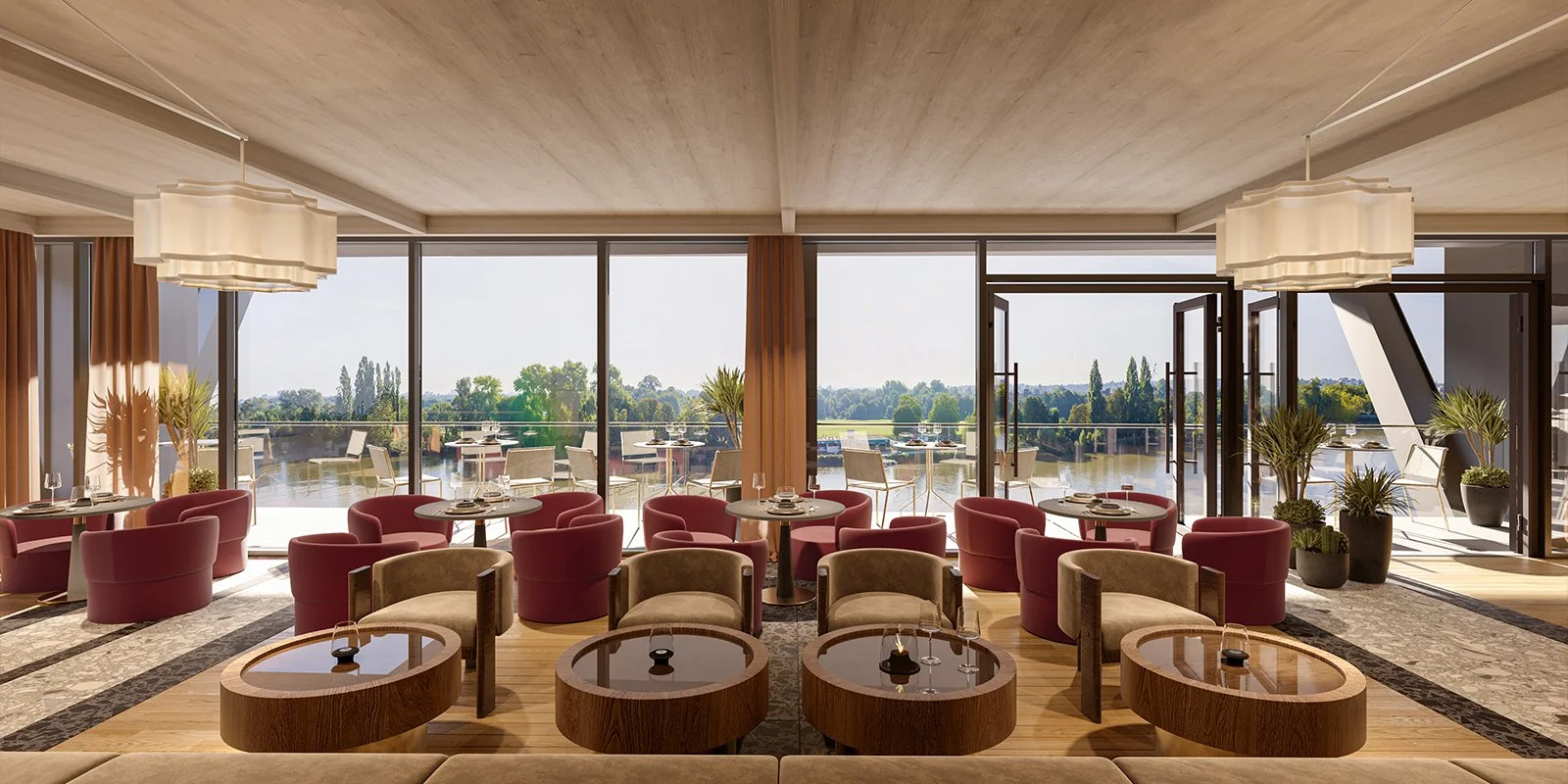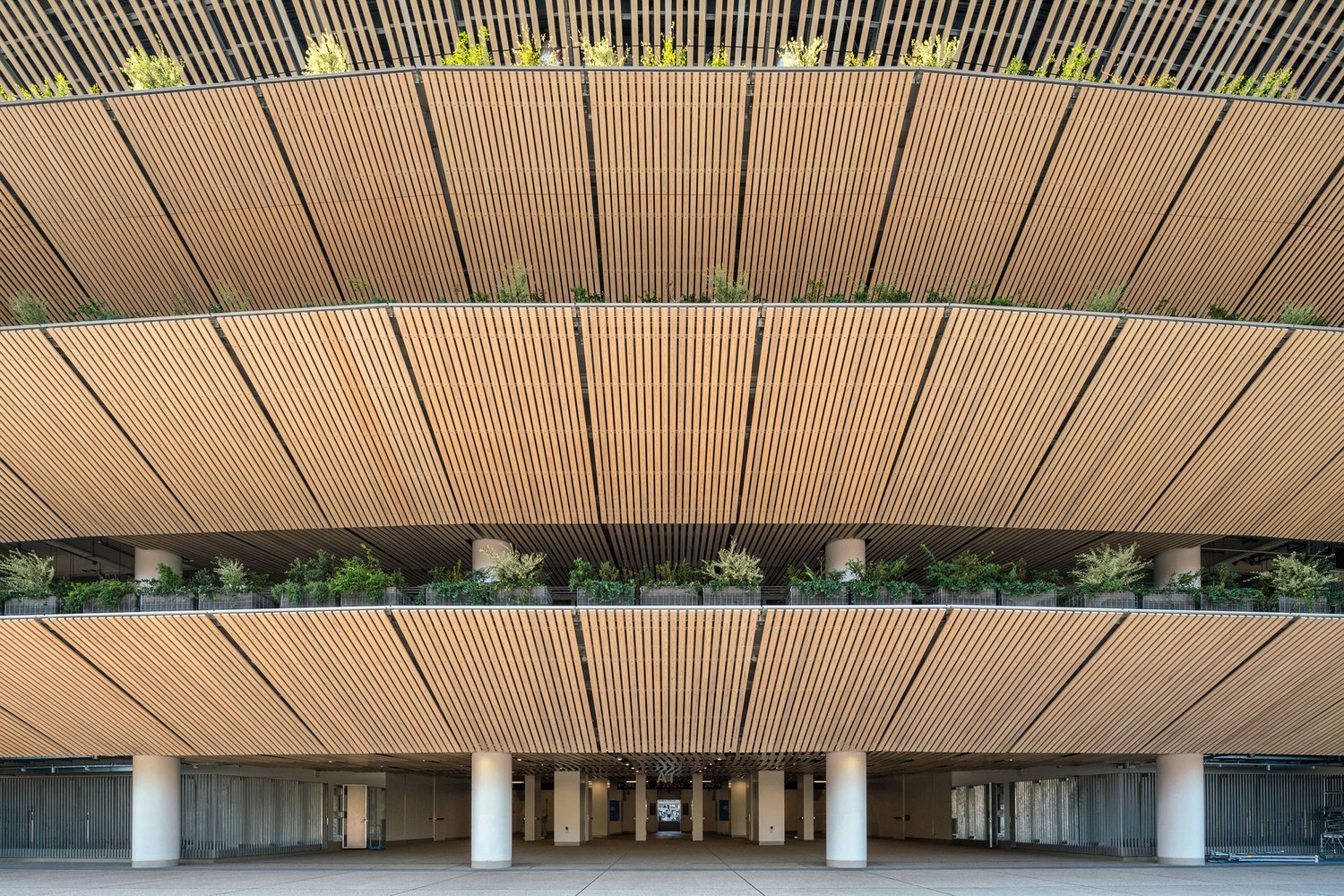
Community
How can sports stadiums be designed with an outward facing presence and everyday offer for the local community? Fulham FC’s new Riverside Stand at the historic Craven Cottage is an ideal example of a project which seeks to do exactly that.
Stadiums have traditionally been designed as inward facing venues however there is a growing need for stadiums to develop an outward facing presence.
The structural design of stadiums is inherently flexible, with typically large, column-free spaces at the centre. This flexibility unlocks the opportunity for stadiums to introduce additional use classes on a temporary or permanent basis to increase dwell time, activate empty spaces, increase revenue and provide a new community offer.
A pioneering approach to the diversification of stadium use can be seen from the team leading the redevelopment of the Riverside Stand at Craven Cottage, home of Fulham FC.
The new stand, when open, will create a new riverside walk for pedestrians and cyclists to travel from Hammersmith Bridge along the Thames Path to Putney Bridge via Craven Cottage. The new route was a Section 106 planning condition and has opened a route that has never previously existed.
Image: Riverside Stand, Fulham, London
In the basement of the stand is a dedicated entertainment space which will host theatre nights, TED-style talks and community events. The ground floor of the stand will front onto the newly created riverside walk, with retail, F&B and a food market spilling out into the public realm. A restaurant is situated on level one, and there is meeting and event space on level two, topped with three floors of members’ club space, including a rooftop terrace, gym and outdoor swimming pool. The approach to the stand’s interiors has been to work with best-in-class designers and operators from specific disciplines from across the hospitality sector. The result, the club hopes, will be a series of high-quality spaces that are busy all year round.
Image: Riverside stand, Fulham, London
“The primary focus of our design meetings was the everyday use of the spaces. It was always felt that we should lead with this and then engineer in the match day element towards the end of that process. If we design with football foremost in mind, we won’t end up with something people want to come to every day of the week.” Glenn Sutton, Fulham Football Club.
Creating an externally facing everyday offer can be a challenge for stadiums due to managing customer flows through a stadium which wasn’t originally designed to allow for such use. One option for stadiums to consider is the addition of self-contained spaces to the external facade of the stadium which are designed to host specific uses but restrict public access to the inner stadium.
In addition the ongoing operation, curation and programming of new outward facing spaces needs to be considered to ensure that the spaces and public offer remain interesting and relevant. In the same way that a theatre or gallery space curates a calendar of talks, pop-up events and family days, stadiums will need the relevant internal expertise to deliver a compelling programme of activities.
Image: Fulham, London
More from Sport+
Sport+ Nature
We look at some of the best global examples where nature has been used to embrace sports stadiums.
Sport+ Community
We spoke to Glen Sutton from Fulham FC to find out about the placemaking led approach to the re-development of their Riverside Stand at the historic Craven Cottage.
Sport+ Sustainability
The Johnan Cruijff ArenA in Amsterdam, home to Ajax FC, has pioneered an innovative new approach to generating energy within the stadium.






